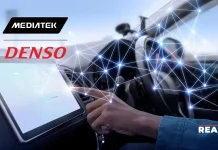Aviva Links, the company enabling the world’s highest performance in-vehicle connectivity solutions for the next generation of software defined vehicles, announced that Kamal Dalmia, the company Co-Founder and COO, will be participating at two key upcoming events: the Automotive Ethernet Conference and the IEEE International Symposium on Circuits and Systems (ISCAS). At both venues, the need for asymmetrical Ethernet to support the automotive industry’s massive transformation will be discussed.
Also Read: Palantir Announces Global Enterprise Deal with Stellantis
IEEE International Symposium on Circuits and Systems (ISCAS) – May 31 at 8:00 a.m. in Austin, Texas. Kamal Dalmia and Claude R. Gauthier, Ph.D. Vice-Chair, Automotive SerDes Alliance (ASA) and Director of Strategic Innovation, NXP Semiconductors, are co-authors on a paper, TDD-based Asymmetrical Ethernet Physical Layer for Automotive Applications, that Gauthier will present via recording at the event. This paper discusses the Time Division Duplex (TDD) approach adopted by the ASA for the physical layer implementation of sensor and display links. It also highlights the use of the TDD PHY in protocols such as Ethernet to provide an extremely scalable and optimized solution for the modern automotive applications requiring vast amounts of data to be moved within the vehicles.
Automotive Ethernet Conference – June 2 at 11:15 a.m. in Munich. Kamal Dalmia will present “Asymmetrical Ethernet for Automotive Sensors and Displays” which discusses the industry’s desire to use the Ethernet protocol for the high bandwidth data movement in vehicles dominated by video-related applications such as cameras, displays and other sensors. This presentation offers a comparison of the available asymmetrical Ethernet PHY options that can provide an optimized solution for such asymmetrical links.
Aviva Links is the in-vehicle connectivity solutions company enabling the world’s highest performance multi-gigabit links for automotive applications. Aviva Links’ highly integrated solutions will enable next-generation software defined vehicles to move vast amounts of data at multi-gigabit speeds while meeting the performance, power, security and cost requirements of the automotive market




